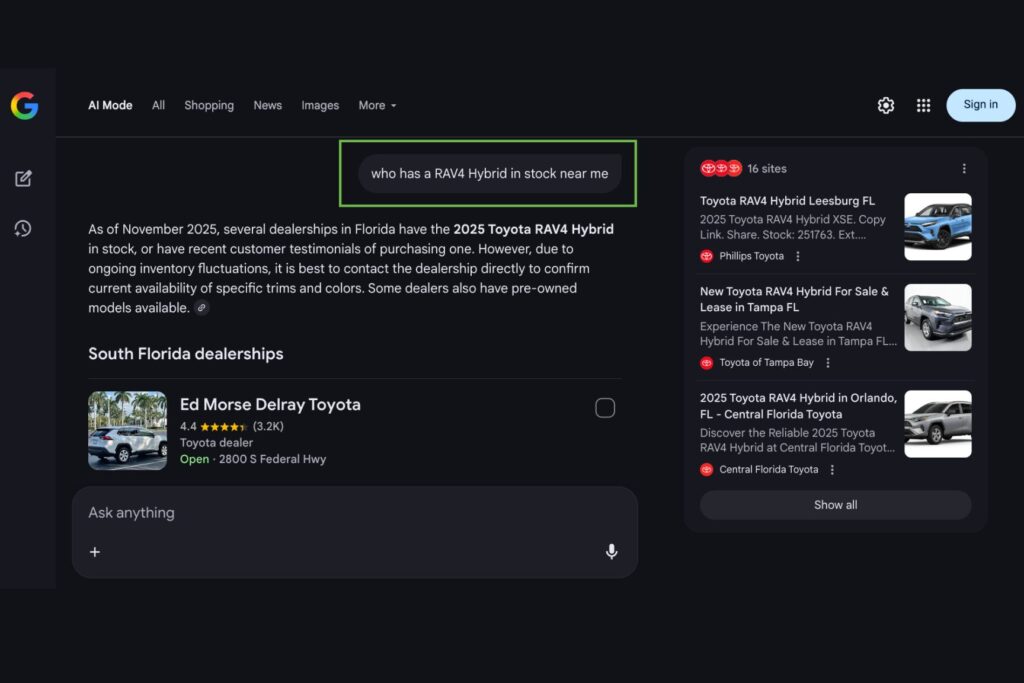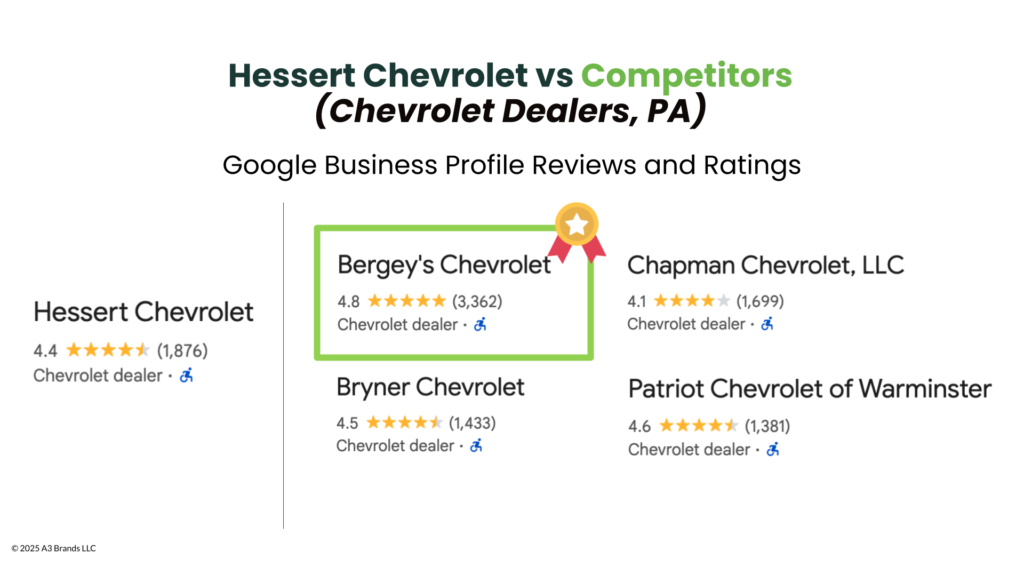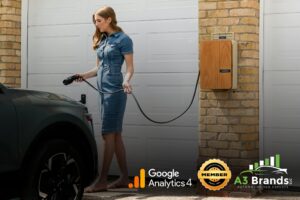When someone asks their phone “who has a RAV4 Hybrid in stock near me,” only one dealership gets recommended. The other nine on page one might as well not exist.
That’s the new reality. AI assistants don’t show options anymore. They pick winners.
We’ve been doing automotive SEO for over 20 years across 1,500+ dealership projects. This AI shift is the biggest change we’ve seen in two decades. The dealers who adapted early are capturing high-intent traffic at zero cost per click. The ones who waited are watching their PPC bills climb while their leads dry up.
Here’s what’s changing and what to do about it.

1. AI Assistants Are Choosing Winners (Not Just Ranking Them)
A customer searches “2025 Honda Accord lease deals.” They don’t see ten blue links. They see an AI-generated answer citing two dealerships by name. If yours isn’t one of them, that customer doesn’t know you exist.
Google’s AI Overviews, voice assistants, and chat interfaces are replacing traditional search results. Position three on page one used to get clicks. Now it gets nothing.
The new rule: Getting selected beats getting ranked.
What AI looks for
AI prioritizes dealerships that make answers obvious:
Direct answers up front. Not “contact us for details.” Right in the first paragraph: “Yes, we have three 2025 Accord Sports in stock. Lease starts at $299/month with $2,500 down.”
Current availability. “In stock now” means something. “Available” is vague. “Contact for availability” tells AI you’re hiding something.
Transparent information. Pricing ranges. Service costs. Hours. AI won’t recommend dealerships that make people work for basic information.
Real example
One dealer was ranking well for “oil change + [their city]” but getting almost no calls. Their service page said “We offer competitive pricing. Contact us today!”
Their competitor said: “Full synthetic oil change: $79.95. Conventional: $49.95. Typical wait: 45 minutes. No appointment needed weekdays before 3 PM.”
Guess who AI started citing? Guess who got the calls?
We rewrote their pages with direct answers. They started appearing in AI results. Their service manager told us: “I don’t get ‘how much does an oil change cost’ calls anymore. I get ‘are you the place with the $79 full synthetic’ calls. They already know what they want.”
Your move: Look at your five most important pages. Read the first paragraph. If it doesn’t directly answer the customer’s question, rewrite it. No jargon. No “contact us.” Just the answer.

2. Think of Your Google Business Profile as Your Digital Storefront. Your Website is Your Showroom
When someone searches “Toyota dealer near me,” they see map results first. That’s your Google Business Profile (GBP), not your website.
If your GBP is incomplete, you’re handing calls to competitors every day.
What complete actually means
Hours are correct (including holidays). All services checked (sales, service, parts, financing). 20+ photos uploaded this quarter (lot, inventory, service bays, team). Weekly posts about specials or new arrivals. Messaging enabled. Reviews coming in regularly, with responses within 24 hours.
That’s not hard. It’s just discipline. And it’s the difference between showing up or not when someone in your ZIP code needs a car today.
The opportunity nobody’s taking
Create neighborhood-specific pages that actually help people. Not spammy doorway pages. Real content.
Talk about the most popular vehicles in that area based on what you actually sell. Mention convenience factors (near major employers, easy highway access). Show photos from local community involvement.
These pages rank for local searches and generate consistent organic leads. Zero ad spend. (If you’re running multiple locations, our multi-store local SEO approach can help you scale this across your entire operation without creating duplicate content issues.)
Your move: Spend two hours updating your GBP. Update everything. Upload 20 photos. Post one special. Enable messaging. Then commit to posting weekly and responding to reviews within 24 hours.

3. Trust Signals Determine Everything
AI assistants won’t recommend a dealership with a 3.2-star rating that hasn’t responded to a negative review in six months. They’ll recommend the dealer with a 4.7 rating who responds to every review within 24 hours. Even if that dealer ranks lower.
Trust overrides everything in 2026.
Your reviews are everywhere now
AI assistants read your reviews. Summarize them. Cite them. Someone asks “who’s the best Honda dealer in Denver,” and the AI says “Mile High Honda has a 4.8 rating with customers frequently mentioning transparent pricing and no-pressure sales.”
That’s aggregated from your reviews. AI is doing reputation analysis in real time.
Get 10-20 new reviews per month. From asking happy customers for honest feedback within 48 hours. Respond to every review within 24 hours. Especially negative ones.
Transparency isn’t optional
AI prioritizes dealers who are upfront about everything. Post your doc fees on your website. Show service prices as ranges. Explain finance terms without the fine print. Make it clear what’s actually in stock versus what you can order.
One of our dealers resisted this. “We can’t post prices. Every deal is unique.” Fine. Their competitor posted price ranges and transparent disclaimers. Guess who started getting cited in AI answers? Guess whose phone rang?
They added transparency. Started getting more qualified calls from people who already knew what they wanted.
Your move: Add staff credentials to your site. “ASE-certified technicians.” Headshots and bios. Show facility certifications. These aren’t fluff. They’re verifiable proof AI checks for and customers look for.
Look, Here’s What It Comes Down To
Organic visibility costs a fraction of what you’re paying for PPC. A click for “2025 Honda Civic + [your city]” on Google Ads runs $8-$15. Showing up in AI Overviews or map results? $0.
Across 1,500+ projects over 20+ years, we keep seeing the same pattern. Dealers who own their organic traffic can significantly reduce their paid search spend while maintaining or growing their lead volume.
Most dealers haven’t figured this out yet. They’re still doing 2020 SEO while the game has completely changed.
That’s your window. Move now and own your market. Wait, and you’ll spend 2027 wondering why your costs doubled and your leads dried up.
Three Things to Do This Week
- Fix your Google Business Profile (2 hours)
Update everything. Upload 20 photos. Add three vehicles as products. Enable messaging. Post one special. Commit to weekly posts and 24-hour review responses. - Rewrite your five most important pages (1 week)
Top models. Most profitable services. Make the first paragraph directly answer the customer’s question. Add real photos and real prices (even ranges). Remove “contact us for details.” - Start getting reviews (ongoing)
Text customers 24-48 hours after purchase or service with a direct link to leave a Google review. Respond to every review within 24 hours. Track your count and rating. Aim for 10+ per month.
AI assistants are choosing winners in 2026. If your content is clear, your trust signals are strong, and your local presence is solid, you’ll win both the AI selection and the customer’s business.
We’ve spent 20+ years and 1,500+ projects helping dealerships do this. Not with tech jargon. With practical strategies that move your numbers.
Want to see where you stand? We offer a complimentary SEO audit showing exactly how visible you are in AI-driven searches and where your fastest wins are. No pressure. No pitch. Just honest feedback from people who speak car dealer, not tech speak.
Tim Boyle

Your Google Reviews Are Costing You Sales (Here’s How to Fix It)

3 Ways AI Is Changing Automotive Search in 2026 (And What Your Dealership Should Do About It)

What Your SEO Agency Won’t Tell You About EV Search Traffic (And What Multi-Store Operators Need to Know)

How Local Dealers Are Losing Sales to Competitors They’ve Never Met – And How to Steal Them Back

Stop Paying Google Just to Stay Visible: How Dealerships Are Building Traffic They Actually Own


